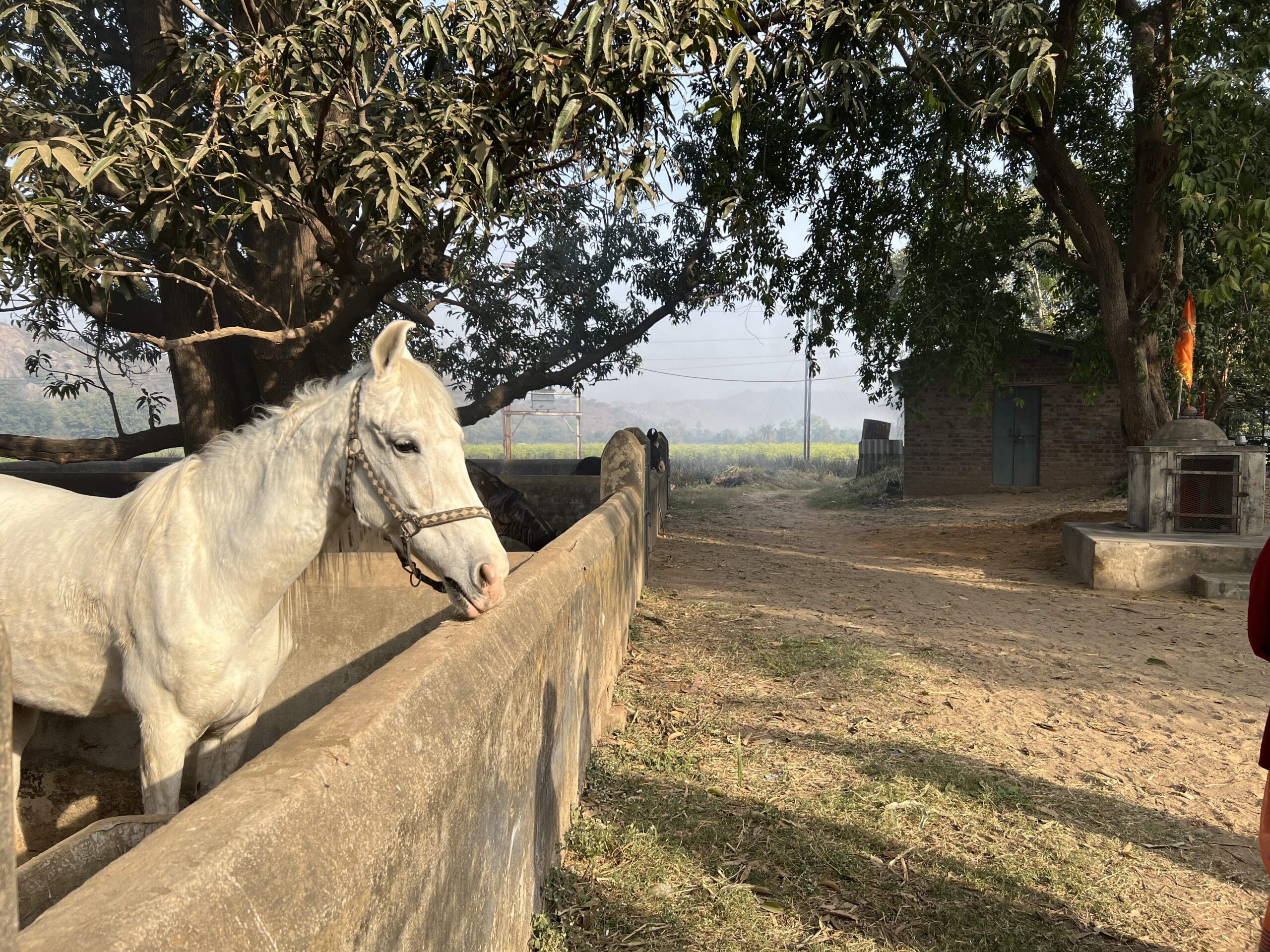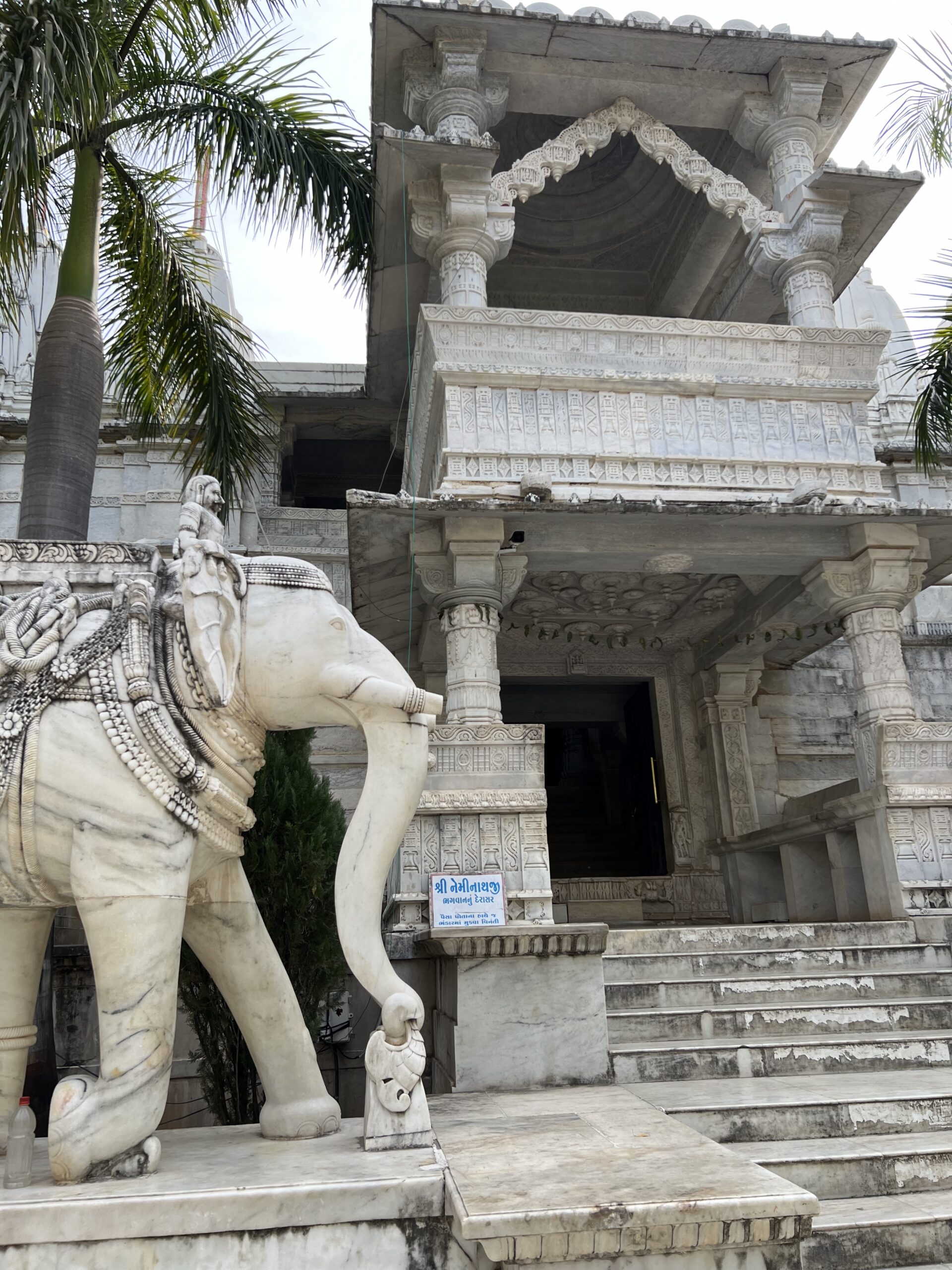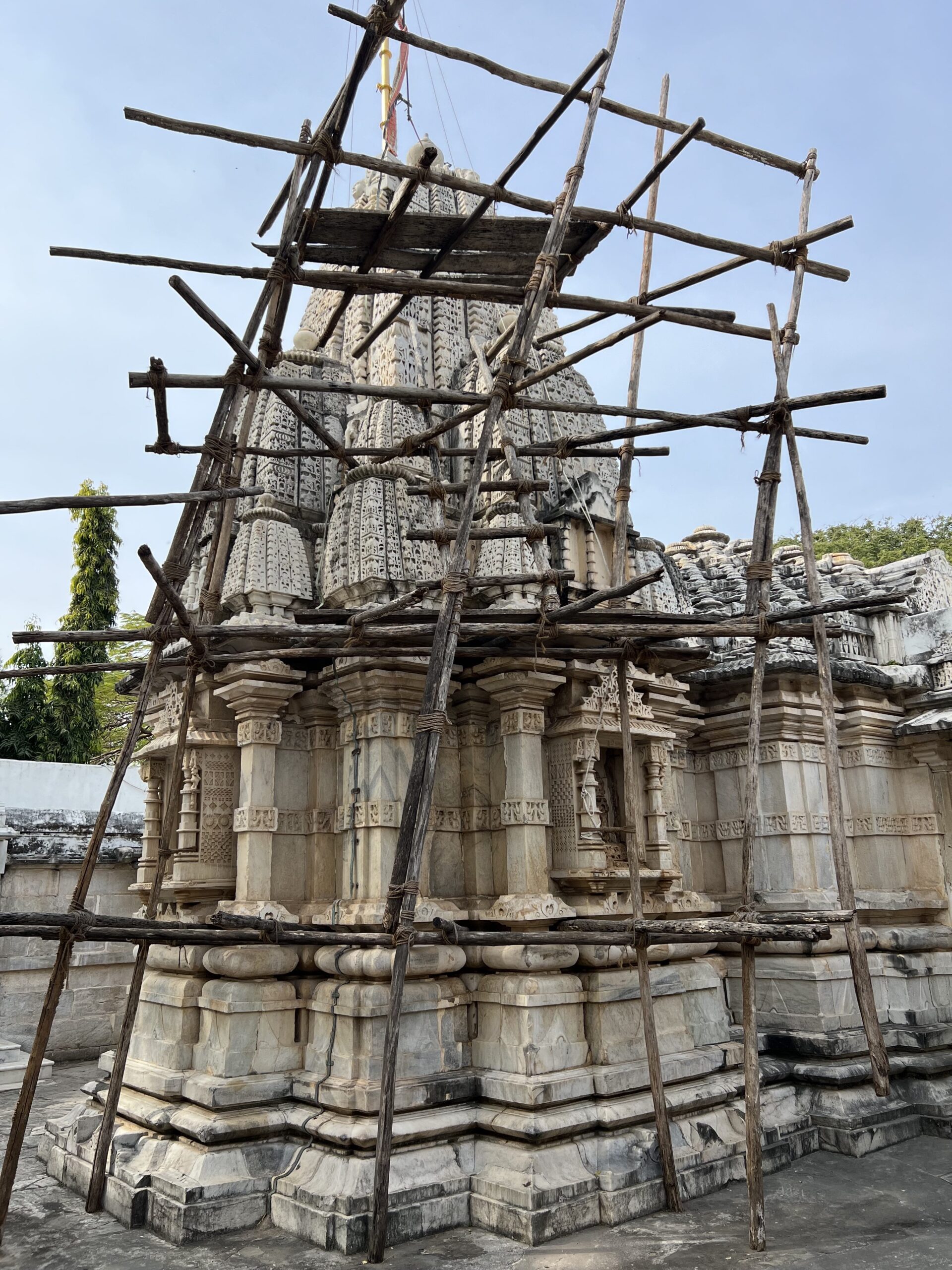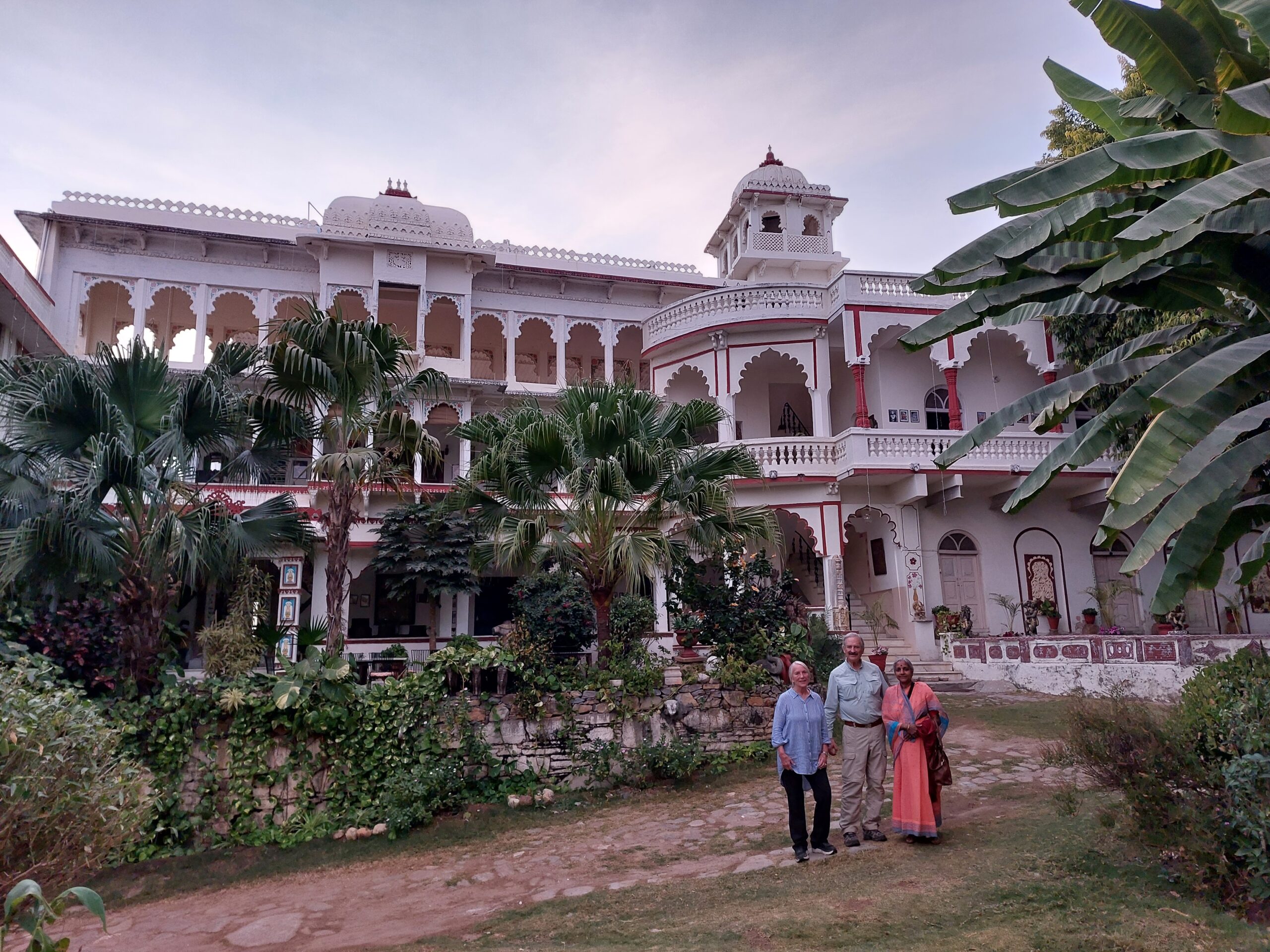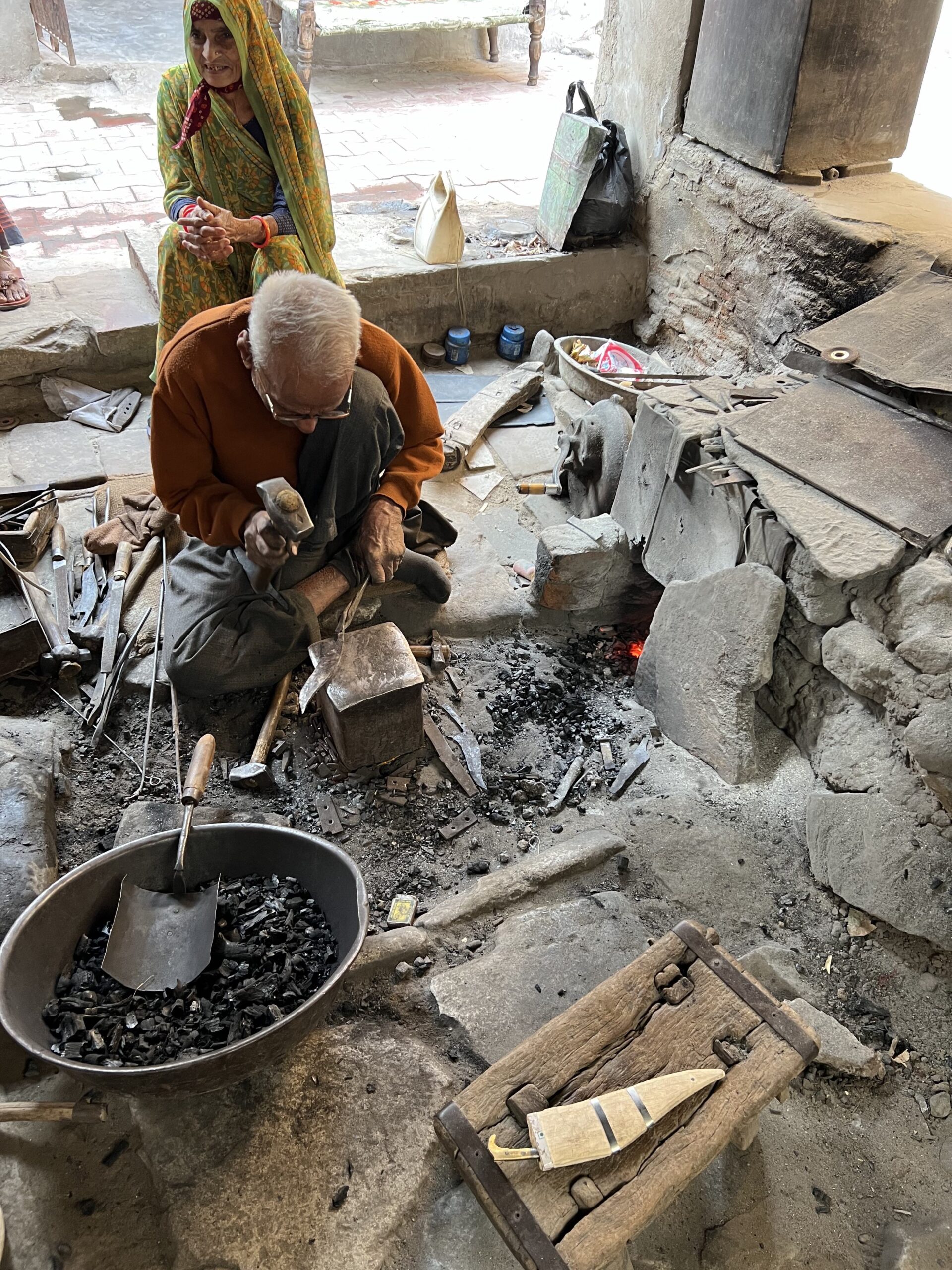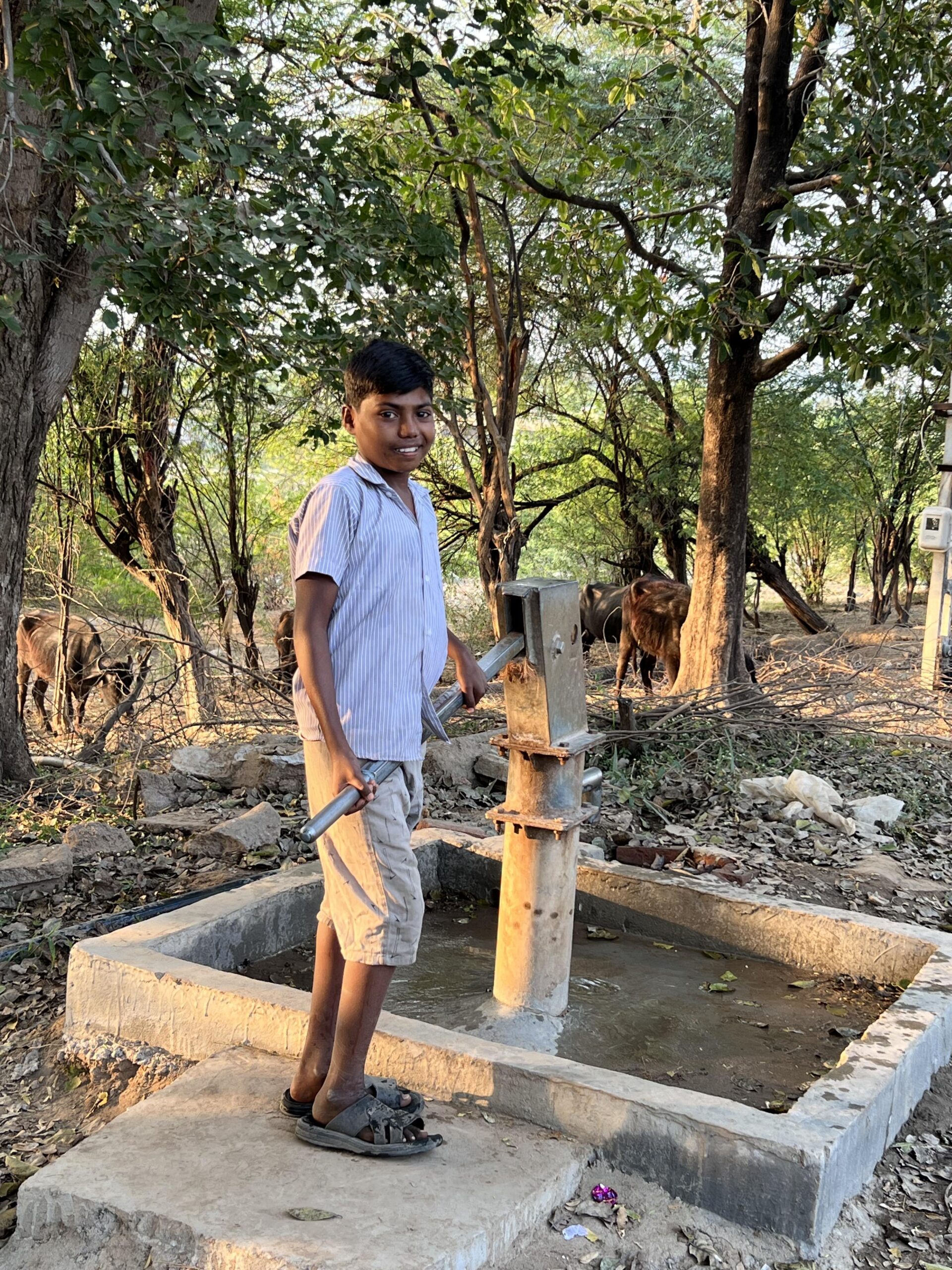January 29
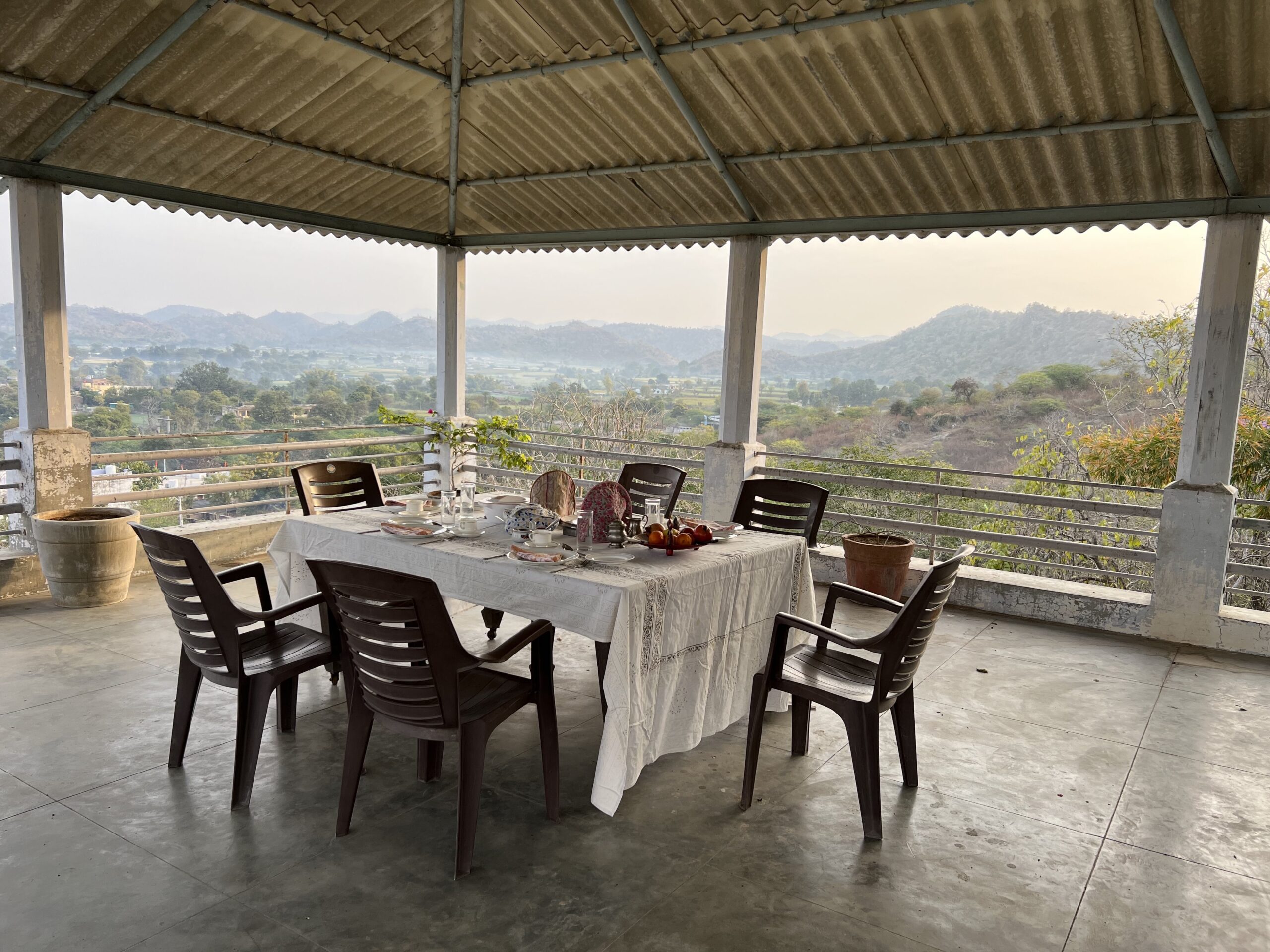
In the morning, the Maharani goes with us to her stud farm, which was the pride and joy of her late husband. There are 10 horses, including one male stud. These are Marwari War Horses, not as fast or as delicate as thoroughbreds, but bred over centuries to bear warriors. What immediately distinguishes them visually is their angled ears which rotate 180 degrees.
In addition to the stables and fields, the Maharani has planted a beautiful cactus garden (she reported her uncle had the largest and most wonderful cactus garden in all of Asia). We watch two gardeners sitting on the ground and plucking crab grass from a large rectangle of land but what is left after weeding hardly looks different from what was there before, dirt and scraggly grass.
Behind the stables starts the fields. The crops rotate in season but right now there is a field of anise seed, mustard seed and wheat. The Maharani works it through sharecropping, giving half of the produce to the lessee of the plot and she reports it is getting harder and harder to find anyone who wants to work that hard in the fields.
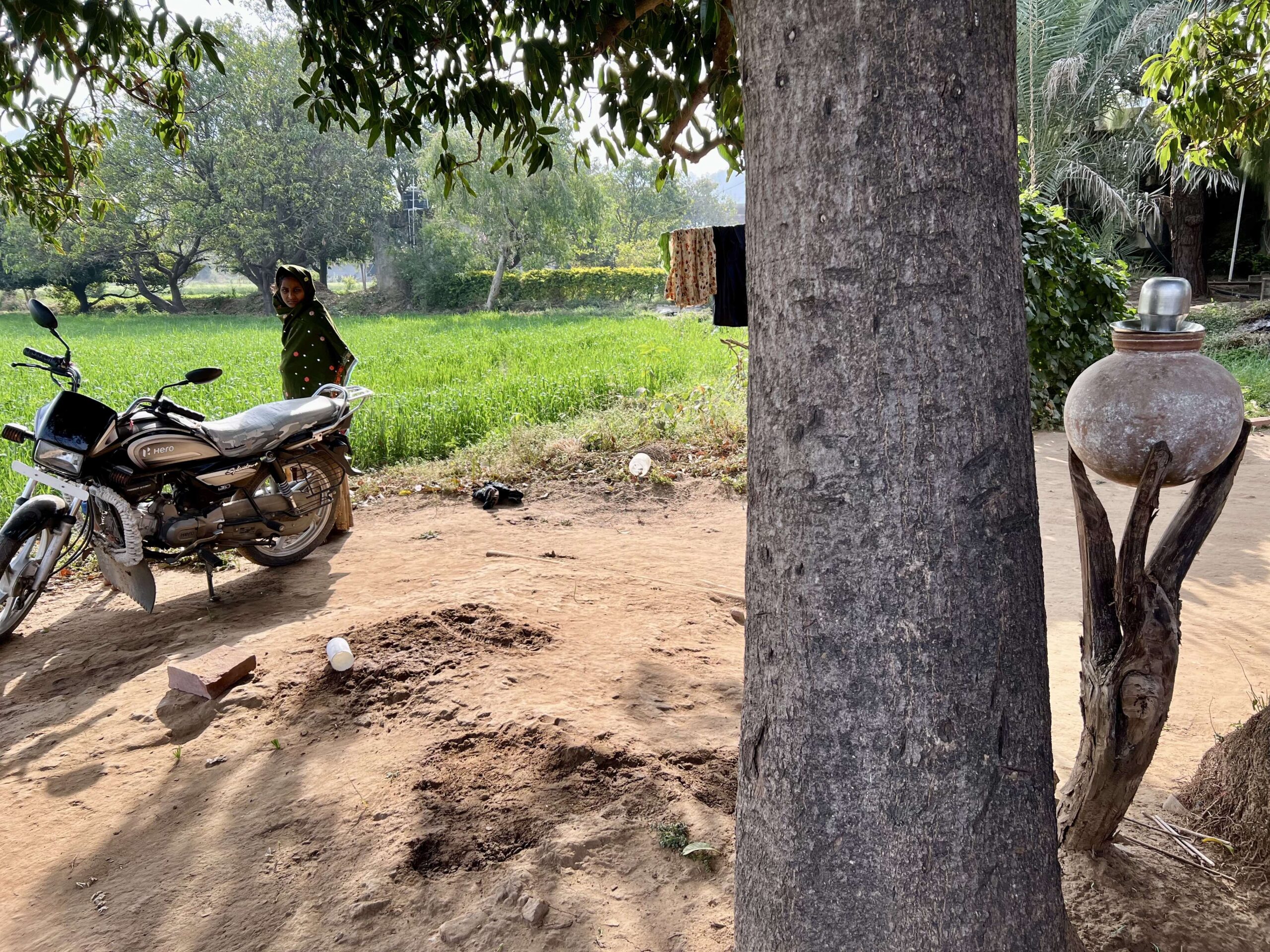
A word about Gujarat and Rajasthan royalty. Sometime in the past there was a large and powerful dynasty near Patan which was defeated in battle. All the defeated chieftains then headed out into the hinterland of Gujarat and claimed their own small kingdom. It is for this reason that there are about 50 small kingdoms in Gujarat (and even more in Rajasthan) which lost their privileges in 1947 but kept their property. Most of them have had to sell off pieces of land to survive or like in Danta and our upcoming stay in Poshina, their palaces have been converted to overnight accommodations. And they in general only intermarry with each other or other royalty in India. So the children of the ruler in Danta married similar past royalty from Orissa, on the other coast of India.
The Danta royalty decided to lease out their traditional old palace to an entrepreneur who wanted to create a spectacular hotel. But then COVID came and the developer recognized the problem of plumbing all the bedrooms so after trying to get partners he decided to decorate it for a movie set! So it is wildly designed in bright colors with a courtyard designed to look like a traditional rural village and some grand rooms which look like movie sets. Work is still going on but at the moment the commercial value is for wedding photography, couples coming to pose for their marriage photos.
On the way to our next stop in Poshina, we stop off to visit a group of large Jain temples, also about 1000 years old, some of the old marble was replaced over time but most of it remains intact. Carvings of deities cover all the walls and ceilings. I completely understood why marble was chosen in a hot tropical climate — it was cold inside.
We arrive into a crowded jostling small city and at its center we pull up to massive gates which are opened to us and we find ourselves in the serene enclosure of the Poshina palace which was built up in parts and fell down in parts over 500 years, We are all staying in the ladies section with 2nd and 3rd story screened in porches for the women’s privacy. Our host reports that when he was young, there were about 8 aunties living in that part of the building. There is some beautiful old art scattered around, especially Tanjore painting, encrusted with jewels.
The walkway to get there is over rough very uneven stones. Unfortunately, earlier that morning while I was leaving a small store, my knee gave out on the bottom step and I suddenly found myself on all fours on the ground, with a strained ankle. So I have iced it, purchased an elastic ankle brace, and taken ibuprofen and am hoping for the best.
Nevertheless, with very sore ankle, I joined the group on our tour of Poshina, visiting an arrow making blacksmith and a craftsman forging elaborate sheathed blades as well as their well-known terracotta production of stylized horses.
Ginny and I took a walk right outside the palace gates into the transport hub where large trucks filled with cotton were waiting to head off for another destination. Chaos reigned and Ginny and I loved it.
And finally, we were driven outside the town to a very rural tribal area where a tree was determined to be wish giving and holy. Now decorated with red banners, if you make a wish here and the wish is granted, you are required to gift one of the terracotta horses to the temple so that it is now a sea of local terracotta animals. I wished for a good report for a good friend undergoing cancer treatment and if that happens, I guess I will need to come back to Gujarat and fulfill my vow.
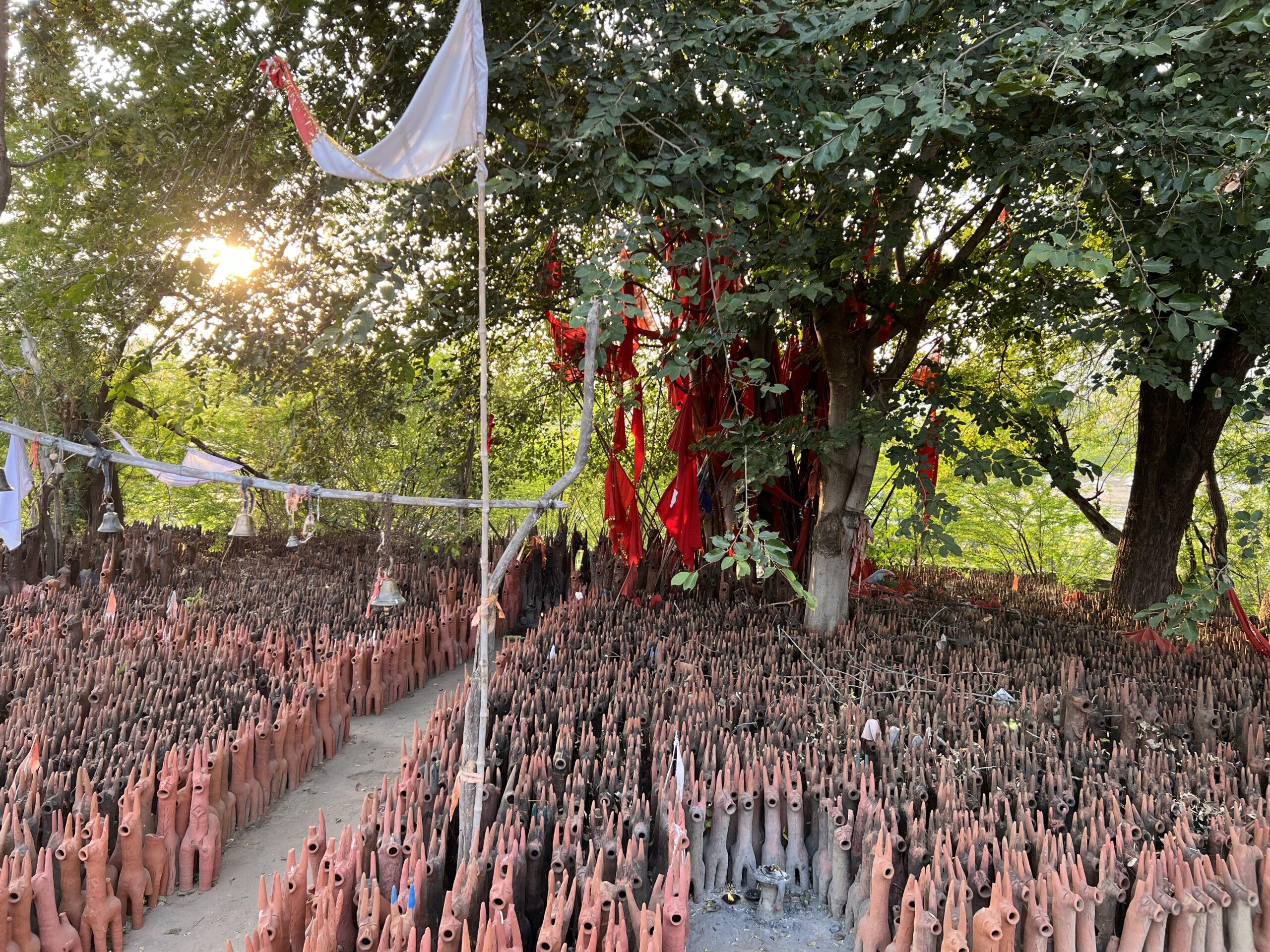
We meet some village children along the way. Near the temple there is a boy drawing water from a fairly new well system and 2 little girls watch us warily. Bill meets some children in a local village who are excited about having their. photo taken. When everyone is at the same level of poverty, it is accepted as the way of life and their seems no inequality among them.
Back at the Poshina palace, we have a good dinner (unfortunately up a flight of stairs for me) and we talk with the Maharani. Her husband has plans for a restaurant next door and seems positive about the future. Their son and grandkids live in Ahmedabad but visit fairly often and had just left when we arrived. Once again, it India, as elsewhere, it is really family that is important for one’s well being.
And now more ibuprofen and bed.

